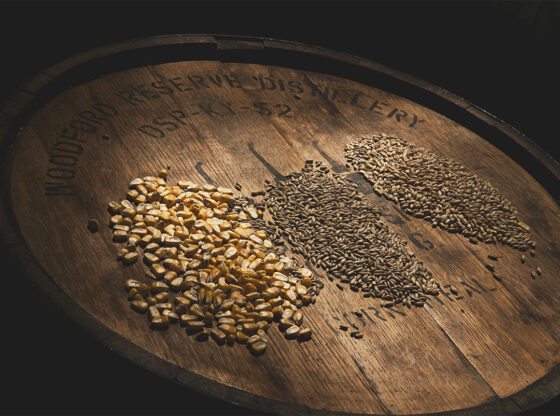
By Hendre’ Barnard, Training and Marketing Manager
Distillique Beverage (Pty) Ltd.
https://distillique.co.za
Click <Here> to see more of Hendre’s articles.
So, you want to make your own Bourbon?
What do you need, and what do you need to know in order to make Bourbon (or Whisky)?
Can I trust information on the Internet or Social Media?
Yes, I recognize the irony in posting on the Internet about not trusting information on the Internet but let us move past that.
The fact of the matter is, that 90% of recipes found on the Internet and especially on Social Media with recipes for Home Distillers to make Moonshine or Whisky or Bourbon, is complete nonsense.
At the very least, it is incomplete, but even more commonly, it is either a recipe to make neutral spirits (or something close to neutral) which is then tweaked with an Essence or Wood Chips to emulate Whisky or Bourbon, OR it is a flavoured Sugar Water Fermentation, where the Yeast is just fermenting Granulated Sugar dissolved in water, with some Grain floating in it to flavour it.
How is Bourbon or Whisky made?
In order to make a Bourbon or Whisky properly, you need to go through the process of Starch Conversion, where the Grain is first Milled, to expose carbohydrates, Boiled, to extract carbohydrates, and then those carbohydrates are converted through the use of enzymes (either naturally occurring in Malted Grain, or added in a concentrated form) into simple fermentable sugars.
The resulting liquid containing the converted sugars is referred to as a Mash if the Solids are retained in it, or a Wort if the Solids are removed. It is then fermented to create a Distillers Beer.
This Distillers Beer is then Distilled, either once, twice or sometimes three times, to create a clear distillate, referred to as New Make Spirit, or sometimes Moonshine.
After wood is added to this New Make Spirit, traditionally in a Barrel, this New Make Spirit becomes Whisky.
That is the basic process – greatly simplified – and disregarding all the Legal requirements of time period in barrel, barrel type, style of product, etc. etc.
Where does the flavour come from in my Bourbon or Whisky?
If you have read our previous Article about Innovating with Whisky, you would already know that there are several ways we can impact the flavour profile of a Bourbon or Whisky.
These include:
- Grains and Malts
- Treatment of Grains and Malts
- Mash vs Wort Fermentation
- Yeast Type
- Fermentation Temperature
- Distillate ABV Percentage
- Barrelling ABV Percentage
- Barrel Wood Type
- Barrel Wood Treatment
- Barrel Previous Use
The biggest factor after Barrel Aging is the Grains and Malts used – normally referred to as the Grain Bill.
This is especially true in Bourbon, where it is a legal requirement that the Bourbon be stored or aged (depending if it is a straight Bourbon or not) in a NEW Charred American Oak Barrel. The only variables during the barrel aging process is therefore the time spent in the barrel (which is normally quite short) and the level of Char.
This is why differences in Grain Bills are much more detectable in Bourbon (and other classes of American Whisky) than it is in South African, Scottish or Irish Whisky.
So, if I want to make a unique or different Bourbon style product, I need to play with the Grain Bill.
Where do I start with a Bourbon Grain Bill?
Now it is all good and well to take a bunch of random grains and through them together, but most Home Distillers normally want a place to start as a guideline.
The following table lists the Grain Bills of some popular Bourbons.
PLEASE NOTE: The information used to create this table was found on the internet via marketing by the brands, and as such Distillique cannot vouch for the accuracy or validity of the information. Also note that the Grain Bill alone will not yield a product that tastes similar to the commercial product.Name Corn % Rye % Malted Barley % Wheat % Rice % Oats % Heaven Hill 78 10 12 Evan Williams 70 14 16 Jim Bean 75 5 20 Rebel Yell Wheat 76 12 10 Four Roses E-Bill 75 20 5 Four Roses B-Bill 60 35 5 Woodford Reserve 72 18 10 Maker’s Mark 70 16 14 Barton 1792 75 15 10 George Dickel 84 8 8 Wild Turkey 75 13 12 Oriental Bourbon 60 10 30 1984 Bourbon 80 12 8 2010 Bourbon 52 16 22 10 Latest Greatest 52 5 10 8 25
Hopefully these figures will give you some idea of where to start when playing around with your own Bourbon Recipes.

